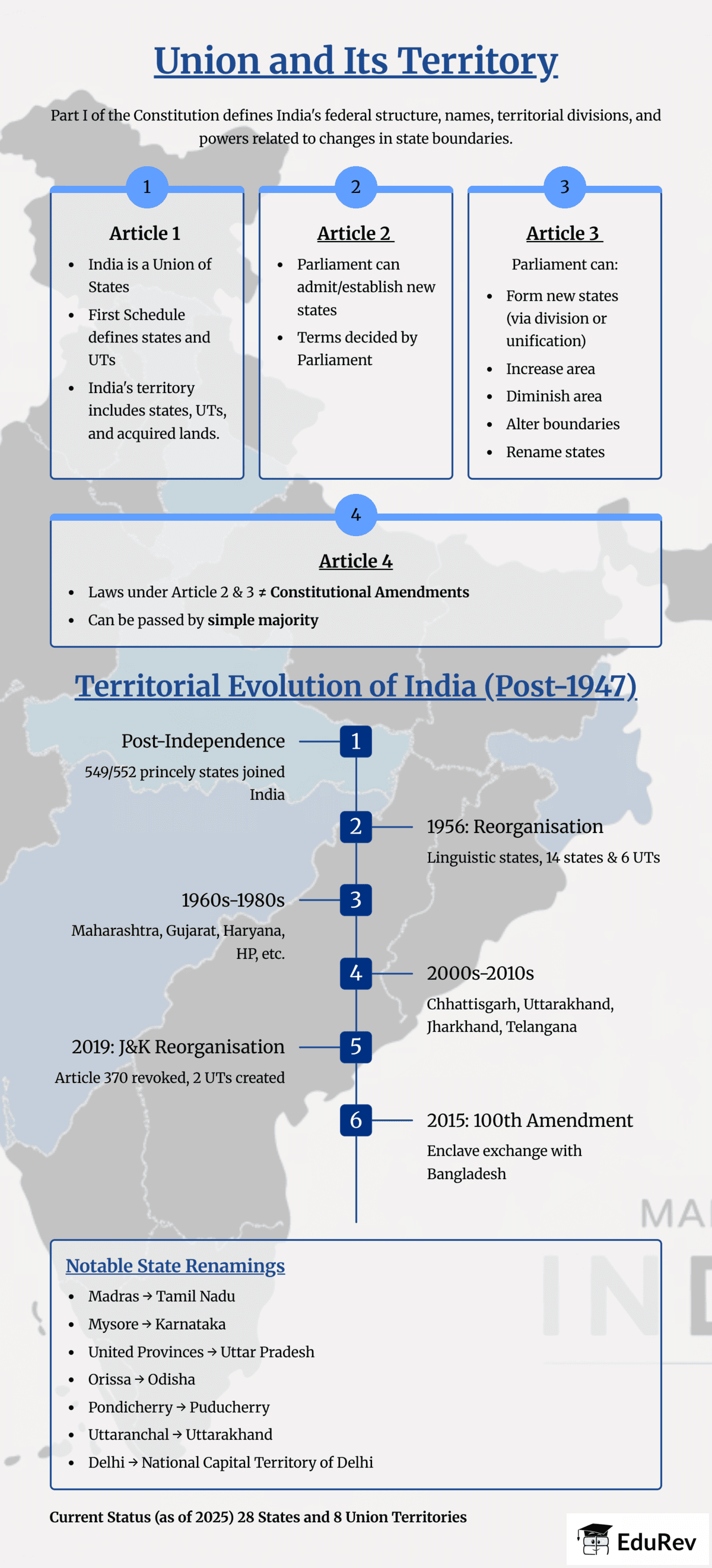UPSC Exam > UPSC Notes > Indian Polity for UPSC CSE > Infographic: Union and its Territory
Infographic: Union and its Territory | Indian Polity for UPSC CSE PDF Download

The document Infographic: Union and its Territory | Indian Polity for UPSC CSE is a part of the UPSC Course Indian Polity for UPSC CSE.
All you need of UPSC at this link: UPSC
|
171 videos|999 docs|259 tests
|
FAQs on Infographic: Union and its Territory - Indian Polity for UPSC CSE
| $1. What is the significance of the Union and its Territory in the context of the Indian Constitution? |  |
Ans. The Union and its Territory are significant as they define the territorial jurisdiction of the Indian state. The Constitution of India categorizes the country into states and Union territories, ensuring effective governance and administration while maintaining the federal structure. Union territories are directly governed by the Central Government, allowing for more centralized control, especially in areas where local governance might be challenging.
| $2. How are Union territories different from states in India? |  |
Ans. Union territories differ from states primarily in governance. States have their own governments with legislative powers, whereas Union territories are administered by the Central Government either directly or through a Lieutenant Governor. This distinction affects the level of autonomy and legislative powers each possesses, with states enjoying more legislative rights compared to Union territories.
| $3. Can you list some major Union territories in India and their unique features? |  |
Ans. Some major Union territories include Delhi, which serves as the national capital and has a legislative assembly; Puducherry, known for its unique blend of French and Indian cultures; and Jammu and Kashmir, which has a special status under Article 370 (though this status has been revoked, its history influences its governance). Each of these regions has distinct cultural, historical, and administrative characteristics.
| $4. What are the constitutional provisions related to the formation of Union territories? |  |
Ans. The formation of Union territories is governed by Article 239 of the Indian Constitution, which allows the President to administer these regions through appointed administrators. Additionally, Articles 240 to 241 outline the legislative powers and administration of Union territories, providing a framework for governance that can be adjusted based on the needs of each territory.
| $5. How does the governance of Union territories impact local administration in India? |  |
Ans. The governance of Union territories impacts local administration by promoting a more centralized approach, which can lead to quicker decision-making and implementation of policies. However, this system may also limit local representation and autonomy. The degree of local governance can vary, as some Union territories, like Delhi, have their own legislative assemblies, while others are governed directly by the Central Government, leading to different experiences in local administration across the country.
Related Searches





















